DNA, a universal, specific, and stable molecule, plays a crucial role in controlling microbial communities during the production process. It is also essential in ensuring the authenticity of raw materials and fighting food fraud, as well as detecting unexpected contaminations.
NGS techniques not only sequence the genomes of individual microorganisms but also study mixed microbial communities in foods and define plant and animal species present in food commodities and products. NGS analysis applies to various foods, processed food samples, and production environments.
Advantages of DNA Metabarcoding
DNA metabarcoding sequences genetic markers providing taxonomic information, coupled with new NGS technologies. This allows rapid, cost-effective, comprehensive, repeatable, and reliable measurement of biodiversity. Metabarcoding finds solutions with all species present in the sample, showing the representativeness of each DNA species in total DNA. It is untargeted, advantageous in preventing food fraud, identifying unexpected contaminations without a dedicated method, and preserving food safety and quality.
DNA Metabarcoding on Vegetable Species
Metabarcoding analysis on vegetable DNA is crucial because raw materials of vegetable origin are often adulterated. DNA metasequencing evaluates the authenticity of raw materials, ingredients, and food supplements, aiding in combating food fraud.
Focus areas include herbs, spices, food supplements, officinal herbs, and foods with vegetal ingredients, which may undergo cross-contamination or manufacturing contamination. This analysis identifies frauds like mislabeling, false declaration of origin, significantly impacting food product quality and safety management.
DNA Metabarcoding on Animal Species
DNA metabarcoding identifies animal species DNA. While targeted DNA analysis (e.g., qPCR or ddPCR) addresses specific issues related to known species, metabarcoding screens multiple genomic regions simultaneously, identifying all ingredients present. In milk, it determines the representativeness of species (cow, buffalo, goat, or sheep milk), preventing fraud. In fish and fish products, it detects common frauds such as incorrect labeling, farmed fish sold as caught, thawed fish sold as fresh, and false origin declarations. It’s also important in meat, pet food, and animal feed.
DNA Metabarcoding on Microbial Species
Massive DNA sequencing in environmental microbiology offers a comprehensive view of global microbial population dynamics in production sites and ecosystems. This technique focuses on investigating identified microbial populations, ideal for contamination investigations, shelf-life analysis, and environmental monitoring.
The origins of pathogenic microorganisms or contaminants detected in processing are often unknown. Metabarcoding, through the Sequencing food factory approach, provides a better understanding of microbial ecology and microorganisms’ role along the food chain. Compared to traditional methods, NGS-based microbial biodiversity analysis (16S metagenomics) includes:
- The identification of thousands of microorganisms in a single analysis
- The identification of non-culturable microorganisms
- The ability to determine the relative abundance of different populations
- Rapid screening of complex ecosystems
- Improved knowledge and ability to control microbial flora
- The minimization of pollution events by improving hygiene procedures in food production facilities
Metabarcoding highlights production stages or plant areas requiring improved hygiene, assesses food storage’s impact on spoilage bacteria growth, facilitating suitable production selection.
The food factory, a microbial ecosystem (Smart Microbial Ecosystem of Food Factory: SMEFF), enables identifying microbial communities or contamination sites, constantly monitoring them. This facilitates targeted interventions in equipment, workflow design, and hygiene practices, significantly improving the final product’s quality and shelf life while reducing environmentally harmful cleaning and production costs. Routine microbiota monitoring in food processing plants enables safer, efficient, and sustainable production practices.
DNA Metabarcoding at Mérieux NutriSciences: From Sample to Final Report
Our laboratories perform nucleic acid extraction, providing support starting directly from raw materials.
- DNA extraction from samples
- Metabarcoding library construction for target taxonomic groups
- Sequencing with Illumina® MiSeq®
- Bioinformatics analysis of sequencing data
- Detailed scientific report with tables and graphs summarizing sample information and the complete method.
Sequencing services comply with ISO 9001 standards and recommendations of experienced professionals.
Our network of qualified laboratories supports projects and tests, from study design to the final report. We adapt everything to meet your needs from biomolecular technique to bioinformatics analysis and data storage. Mérieux NutriSciences offers analysis and scientific advice, adding value to complex sequencing results, particularly for practical application, increasing food safety and quality.



